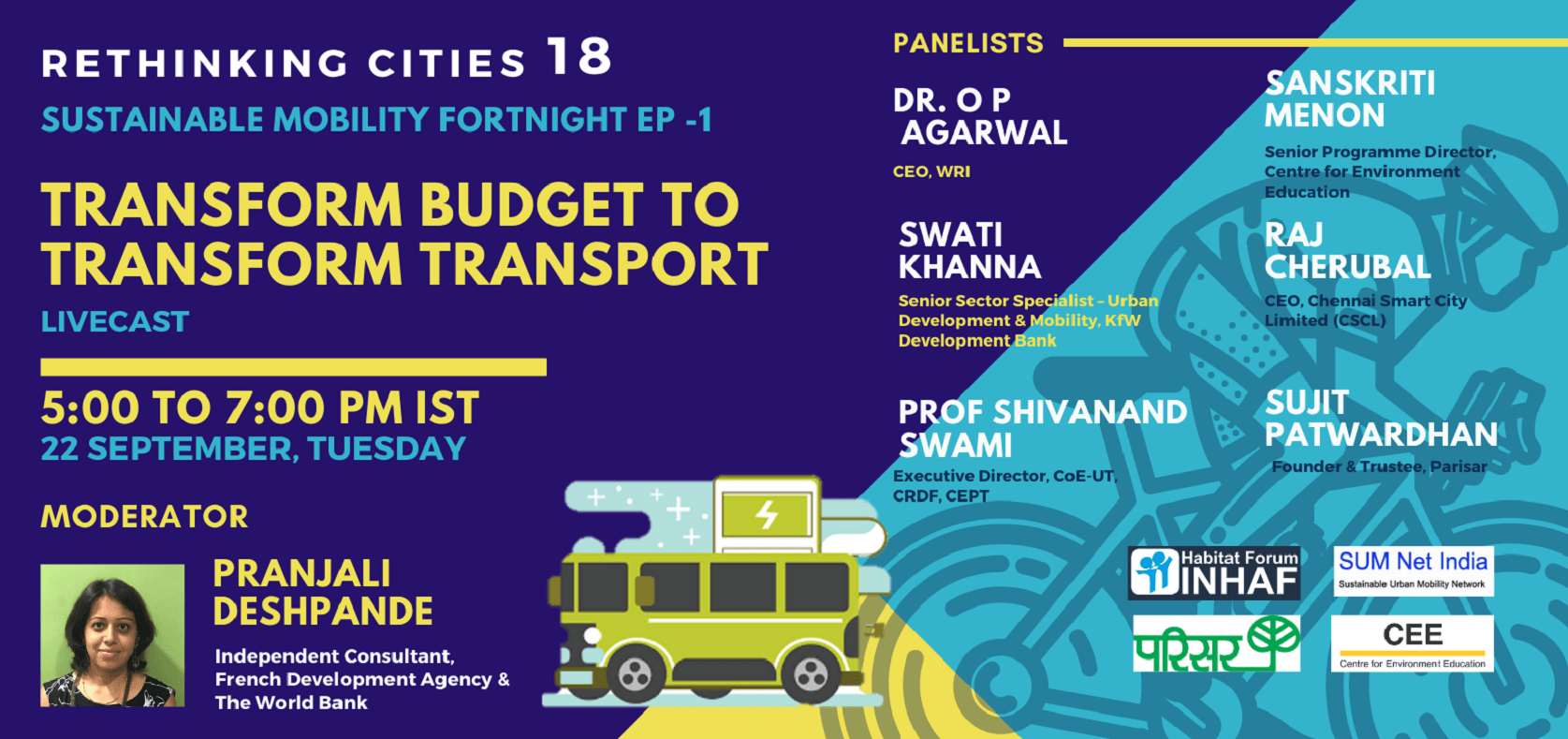
Local Time
- Timezone: America/New_York
- Date: Sep 22 2020
Sustainable Mobility Fortnight- Transform budget to transform Transport
Though most decision-making authorities believe in the need to promote walking, cycling and public transport, the investments in transport infrastructure indicate different trends. The transport investments are heavily skewed towards building private motor vehicle infrastructure. Sadly, it is true for all the three tiers – the national, state as well as urban local body’s budgets. Barring investments in metro rails, MoHUA budget shows less than 10% investments in sustainable transport infrastructure. Though the Department of Heavy Industries is investing some portion of its budget in electric mobility, the approach is also to invest in private electric vehicles. The ministry that deals with the road transport – MoRTH – spends their money mostly on building new highways and roads, with hardly 0.3% investments on road safety. On top of this, while the rising petrol costs are being discussed on a daily basis, there is hardly any discussion around reducing the tax burden on sustainable modes to make them easily available for the masses. The current taxation structure in the transport sector does not allow easy penetration of cycles in low cost communities and low bus fares in public transport. The state budgets and municipal corporation budgets of most of the cities show a similar approach.
Till 2015, the municipal corporation of Pune was no different. But, between 2015 to 2018, the Municipal corporation changed its transport investment pattern to transform the city’s transport infrastructure. During this period, the municipal corporation diverted the funds allocated for grade separators and concrete roads towards public transport, constructing footpath and cycle tracks which resulted in more than 30 km of footpath and cycle track network, BRT expansion and getting electric buses. The transport budget approach was improved from investing 20% of total budget on sustainable mobility to 50% on sustainable mobility. This is an interesting example for other Indian cities and state governments to follow. There could be several such examples across India and the discussants will share such examples and highlight the need for Indian cities to change the investment approach.
The webinar will focus on the need to change the investment approach so that the implementation authorities commit at least 50% of the transport budget towards sustainable mobility. The speakers in the webinar will discuss their experience of working with various government agencies on their transport budgets, taxation patterns, subsidies etc.
